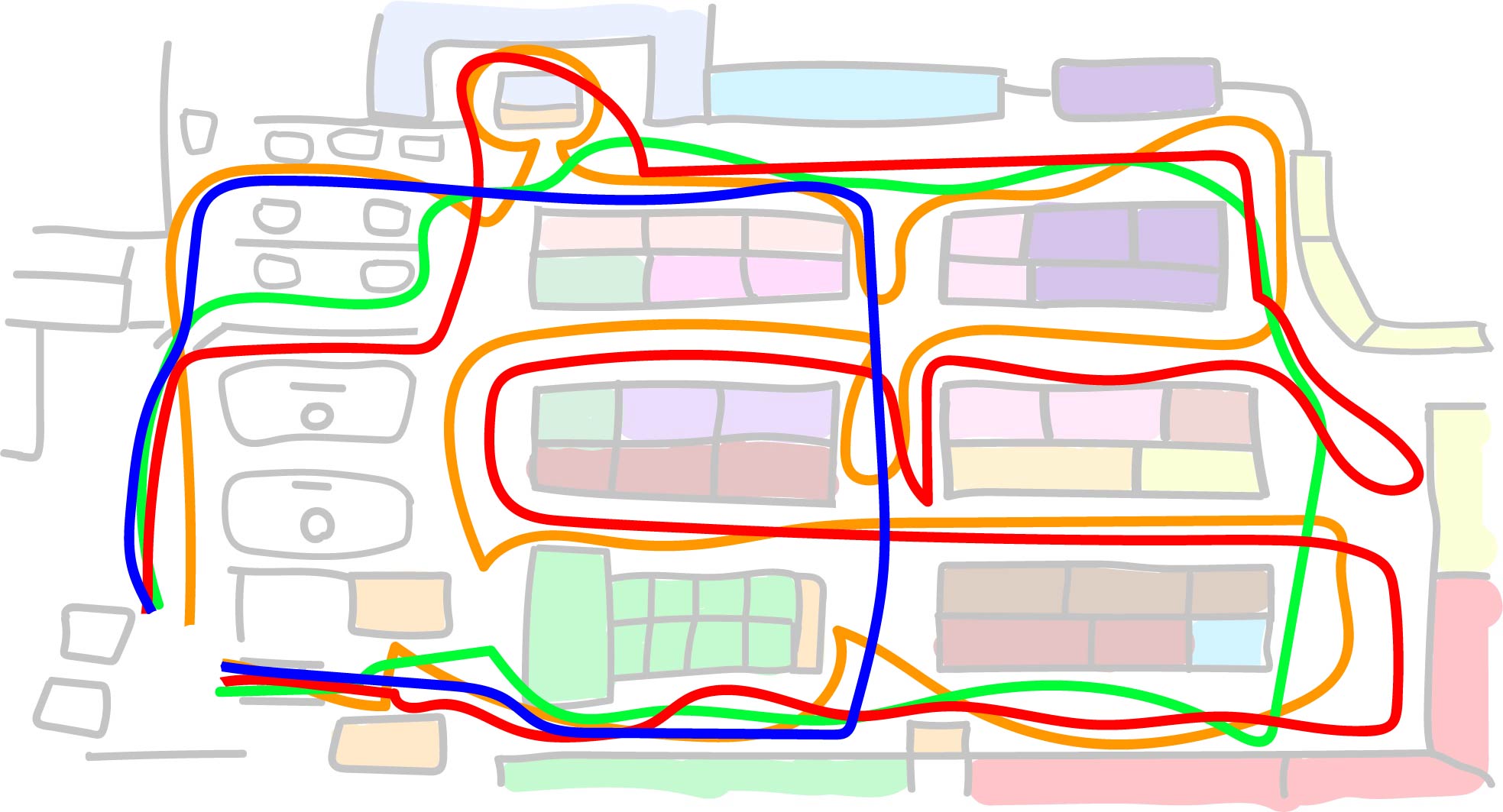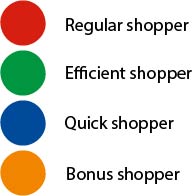P3 - Cultural Diversity
Racial representation in the Albert Heijn
By: Renee de Keijzer
Resit - 28/01/2021
Research
Intervention
Interviews
Mapping
I created new mappings in which I specify more and create a clearer view of the space.
Small disclaimer: I used Illustrator to make these mappings, however I am just starting with wokring in Illustrator so the work might not be as advanced but I think it's a lot clearer like this compared to my previous mappings.
Mapping of the Body movements in the space
Mapping of the spatial setting
Before looking at the body movements in this space, I think it's important to know the spatial setting because this is classified and put together in a specific way.
In the map I created for the spatial setting you can see where products are placed, I will let you in on some marketing strategies why certain products are placed in specific places and why the supermarket this does.
Most supermarkets have similar floor plans. This is because the basic nessecities customers need when going grocery shopping are: Vegetables & fruits, Bread and Dairy. Therefor the supermarket places these products in a strategic way which makes you go through the whole store, being more likely to buy products that you didn't really need or came to the store for.
Besides those 3 'nessecities' the other products are also placed with reason. The idea is that the first path has everything you might need for dinner also including spices, meat, pasta, rice or other 'world products'. With world products the store means, products for dishes that are foreign and do not origin from the Netherlands, think of Curry, Sushi or Burritos.
This however makes the supermarket also interesting for people who like to cook these dishes which targets a bigger range of customers, including their cultures in a mainstream store. Which makes the store also inclusive for different cultures.


For the mapping of the body movements in the space, I focused on the different types of shoppers. I put them in 4 catagories because these are the four main shoppers I recognize in the store.
The first one being the regular shopper. This shopper has a slight idea of what he/she wants to buy but is open to get inspired whilst doing their groceries. This shopper also follows the desired route that the store has mapper out, going past every path and stopping at the bonus sections.
The second one is the efficient shopper. This shopper has made a list before hand and knows exactly what he/she needs. This shopper therefor only walks to the isles where the products on his/her list are and is less likely to buy products he/she does not need.
The third one is the quick shopper. This shopper only needs a few products, most of the times breakfast or lunch. The shopper therefor only goes to the drinks, salads and sandwiches. The person is also only briefly in the store and makes sure the trip is as short as possible.
The last one is the Bonus shopper. In the Albert Heijn there are of course Bonus discounts and some people come to the store specificly for these products. Therefore they do go through the whole store but pay special attention to the Bonus products of that week and are more likely to only buy Bonus products.
Mapping of the wider context of the space
For the mapping of the wider context of the space I made a map which compare two different time settings of the same space to show the developments and thing that have stayed the same.
The store (or space) is located in the city centre which makes it that a very diverse group of people visit the place. There are many Albert Heijn's in Rotterdam, 21 to be specific and most of them are located in or near the city centre so there are definately similar spaces. However this specific Albert Heijn is quite compact and small compared to the other ones in the city.
One of the bigger differences is that the demographic regarding to age has changed. Whilst in 1980 mostly working people were living in the city, in 2020 these are still there but there are also a lot of retired people living in the city while working people often are more attracted to the country side. This is likely because we earn more and in the country side the stores are further away, making the city more attractive for retired people because the stores are near by.
Also the divrsity of people in Rotterdam has changed a lot. In 1980 the migration from different countries just arrived whilst now Rotterdam is known for its diverse population which finds itself back in also the employees of the Albert Heijn.
